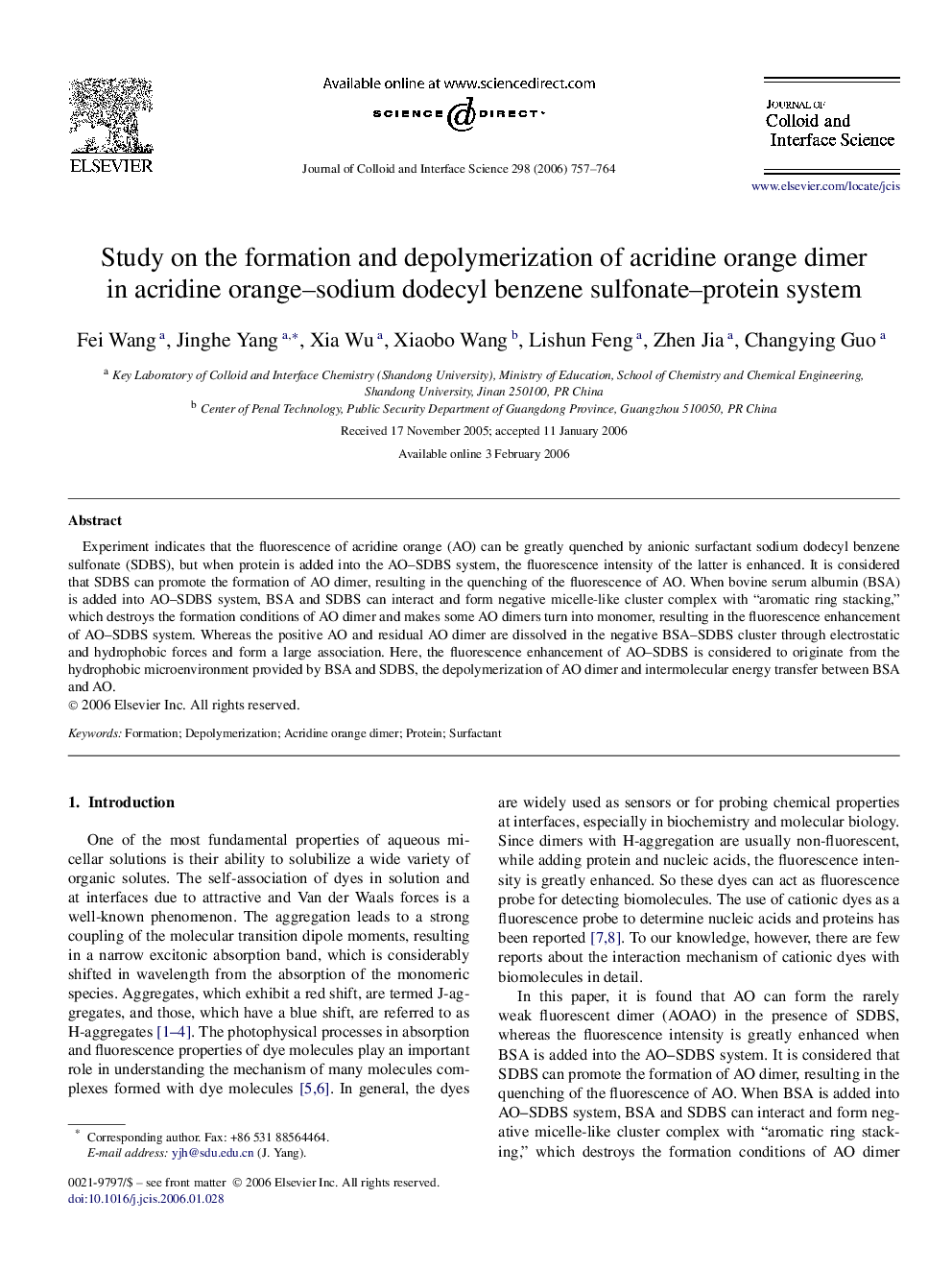| کد مقاله | کد نشریه | سال انتشار | مقاله انگلیسی | نسخه تمام متن |
|---|---|---|---|---|
| 613693 | 880726 | 2006 | 8 صفحه PDF | دانلود رایگان |

Experiment indicates that the fluorescence of acridine orange (AO) can be greatly quenched by anionic surfactant sodium dodecyl benzene sulfonate (SDBS), but when protein is added into the AO–SDBS system, the fluorescence intensity of the latter is enhanced. It is considered that SDBS can promote the formation of AO dimer, resulting in the quenching of the fluorescence of AO. When bovine serum albumin (BSA) is added into AO–SDBS system, BSA and SDBS can interact and form negative micelle-like cluster complex with “aromatic ring stacking,” which destroys the formation conditions of AO dimer and makes some AO dimers turn into monomer, resulting in the fluorescence enhancement of AO–SDBS system. Whereas the positive AO and residual AO dimer are dissolved in the negative BSA–SDBS cluster through electrostatic and hydrophobic forces and form a large association. Here, the fluorescence enhancement of AO–SDBS is considered to originate from the hydrophobic microenvironment provided by BSA and SDBS, the depolymerization of AO dimer and intermolecular energy transfer between BSA and AO.
The interaction model of the BSA–AO–SDBS system.Figure optionsDownload as PowerPoint slide
Journal: Journal of Colloid and Interface Science - Volume 298, Issue 2, 15 June 2006, Pages 757–764